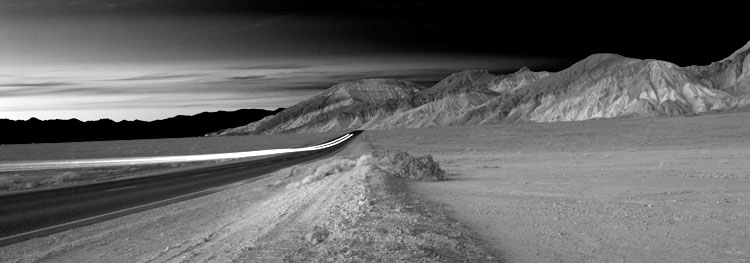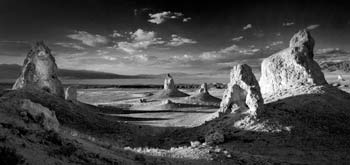 |
|||||
Death Valley & Beyond
|
|||||
|
|||||
Death Valley Road Looking North with Taillights | 2014 |
|||||
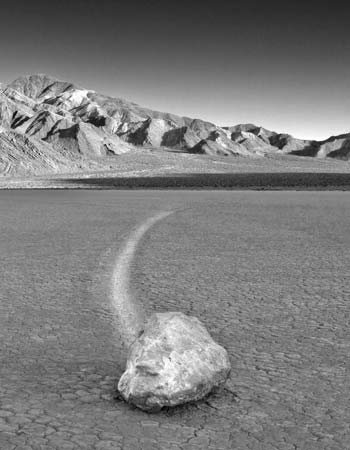
|
This series of photographs were taken in and around Death Valley California over the last few years. I choose to reproduce these images in black and white, for me it tells a better story, invokes a much stronger emotional response and it invites you to see the essence of subject. I like to use a strong use of design elements also you will notice that there are strong feelings of vast openness and solitude with only a slight touch by man. Finding a place that you like and discovering something unusual is a very satisfying thing for me in photography. As Rachel Carson said, “Those who contemplate the beauty of the earth find reserves of strength that will endure as long as life lasts. There is something infinitely healing in the repeated refrains of nature -- the assurance that dawn comes after night, and spring after winter.” Death Valley is one of the best geological examples of a basin and range configuration. It lies at the southern end of a geological trough known as Walker Lane, which runs north into Oregon. The valley is bisected by both Death Valley and the Furnace Creek Faults. The eastern end of the Garlock Fault intersects the Death Valley Fault. The Furnace Creek and the Amargosa River flow through the valley but eventually disappear into the sands of the valley floor. Death Valley also contains salt pans. According to current geological consensus, during the middle of the Pleistocene era, there was a succession of inland seas (collectively referred to as Lake Manly) where Death Valley is today. As the area turned to desert, the water evaporated, leaving the abundance of evaporitic salts such as common sodium salts and borax, which were later mined during the modern history of the region. Photography is my profession and it's my hobby. I do commercial work to pay the bills. I do personal work or fine art to feed my soul. Photography enables me to show the world what I see and it is also a way for me to keep a diary of where I have been and what I have seen. When I go out photographing for myself I don't go out with any preconceived ideas. I explore until I find something interesting. When I do, then I record what I see. I may do one exposure or I might photograph the subject from many different angles. It all depends what the subject is, how unusual it is or perhaps it's something that seems to be out of place. I find it interesting that most people view photography as reality, but in reality it's the photographers' interpretation of what he sees. Depending on the lighting, lens used, angle of view and cropping all can change the story of the photograph. Photography is visual storytelling. Visual stories can transport us — not only to another place, but inside another person’s life or take us on an intimate view of the structure of a flower. Most of my work comes from outside challenges that requires me to deliver a product that a client can use to market a particular item or idea or to tell a story. My personal work comes from with-in. This gives me the freedom to explore and visualize different subject matter but it still requires me to tell a story, to stir an emotion or to cause the viewer to wonder. I photograph because life is fuller being creative. As an artist we create work that hopefully collectors will buy and display. Art making and art collecting are vitally intertwined and mutually dependent on each other. As artists we will make art even if we don't have collectors, but if we do have collectors who buy and display our work it becomes intoxicating. Ultimately we all need money to live, eat and purchase materials for our craft. Photography is probably different from other types of art, because people understand this is the artists' vision. With photography most people view photography as reality, but in essence it's the photographer interpretation of reality. I can change the interpretation or the story of a photograph by what I include or exclude in the image. |
||||
Rock on Racetrack Playa Looking East at Dusk | 2013 |
|||||
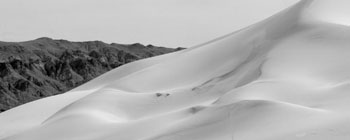 |
|||||
Eureka Dunes | 2013 |
|||||
Trona Pinnacles Tufa Spires | 2015 |
|||||
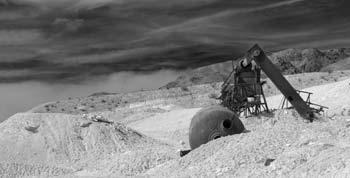 |
|||||
Old sulfur mine outside of Death Valley | 2013 |
|||||
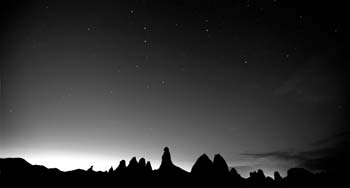 |
|||||
Dusk with Big Dipper at Trona Pinnacles | 2013 |
|||||
| Gene Sasse © 2016 | gene@genesasse.com | 909-941-3993 | |||||
